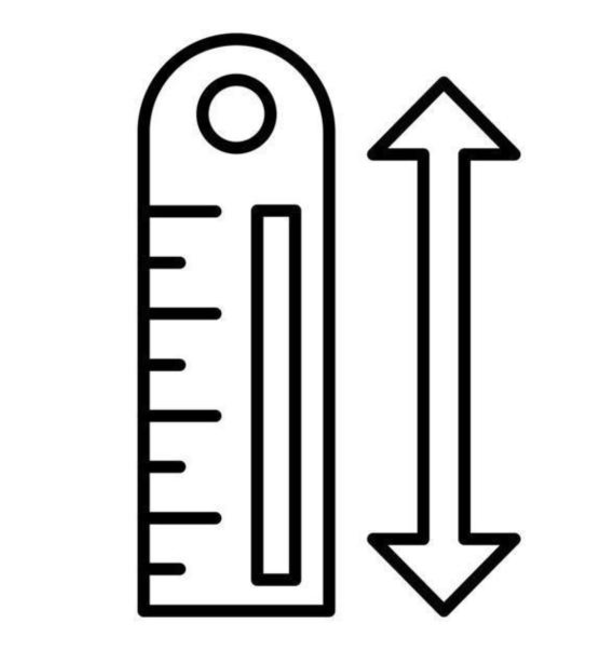
Vasectomy is a dependable method of birth control for men, or anyone assigned male at birth, who decides they no longer want to cause a pregnancy.
*Now offering 6 week semen analysis to confirm results sooner.
Payment Options
Self Pay
You pay $750 which covers the consultation, procedure, 3 month semen analysis and any follow up visits or communication related to the procedure.
Insurance
With this option, you pay upfront $750 which covers the consultation, procedure, 3 month semen analysis and any follow up visits or communication related to the procedure.
We are out-of-network but we will submit all the claim paperwork to your insurance company for you, and they will mail you a check in the amount they cover.
If they cover the procedure, but you have not yet met your deductible, they will apply that amount to your deductible.
Sliding Scale Pricing
We want reliable fertility control to be available if you need it.
Please send an email to mydoctor@communitylovedpc.com to inquire about availability of Sliding Scale slots.
Frequently Asked Questions
-
We will work with your private insurance plan as an out of network provider.
We will take care of all the paperwork so you don’t have to. If they cover the procedure, they will mail the payment directly to you or apply the amount to your deductible.
-
Imagine a tube that sperm flows through to get from testicles where they are made, to the penis and out. Vasectomy means we cut that tube and separate the ends with a barrier of tissue (imagine cutting a wire in a circuit, bending the ends away from each other and putting a barrier in between) so that the sperm does not enter the semen or the penis during ejaculation. Instead, it empties in the scrotum where the body recycles it just like it recycles other dead cells in every other part of the body.
In medical terms:
To begin, a pressure spray applicator is used to numb the skin and vas tubes without using any needles.
With the no-needle, no-scalpel vasectomy (NNNSV), special instruments are used to perform the procedure through a single tiny access-opening on the front side of the scrotum. The 1/4-inch slit usually seals within hours, and no stitches are needed.
Each vas tube (left & right) is divided about one inch above each testicle, where it is just beneath the thin scrotal skin and very easy to reach. Then the divided ends are positioned out of alignment, by closing the vas sheath between the 2 ends with a suture or tiny clip so the ends are separated and won't grow back together. -
My overall practice (the primary care side) is low overhead so I can make quality primary care more accessible to more people. For vasectomy, my values are the same. The instruments I use are the same as other providers, and my training and skill is the same, but my overhead is much lower so I can give my patients access to high quality healthcare and vasectomy as a birth control option without breaking the bank.
-
No. You do not need to be a patient of Community Love Direct Primary Care to get a vasectomy through us.
-
You pay $750 upfront for the procedure. ($75 deposit to schedule consultation and remaining $675before procedure).
If you have insurance, we will send a form to your insurance company on the day of the procedure. Whatever amount they cover of the procedure they will mail directly to you. Sometimes they cover the procedure, but if you have not yet met your deductible, that amount gets applied to your deductible.
-
Absolutely. Call the office at 919-899-1720, or send an email with your questions to Dr Devasthali at MyDoctor@CommunityLoveDPC.com
-
Semen that comes out when you ejaculate is 95% fluid and 5% sperm. Vasectomy diverts the sperm from ever reaching the penis. So even though there is still semen, there is no sperm in it so your partner cannot get pregnant. (Vasectomy, like every other birth control method, is great but nothing is not 100% effective).
In medical terms:
Sperm are made in the testes. From each testis, sperm move through a long curled-up tube behind the testis (the epididymis) wherein they become mature. From there, they swim up a foot-long tube (the vas) which guides them up to the channel (urethra) of the penis. Just before entering the urethra, the left and right vas tubes are enlarged, and it is here, behind the bladder, where many sperm are stored between ejaculations. The easiest place to access the vas tubes is just above the testes where the vas tubes are just beneath the thin scrotal skin, easy to feel and very mobile.
The objective of vasectomy is to prevent sperm from entering the semen. 95% of semen is fluid made by glands called the prostate and seminal vesicles, located in the pelvis behind and beneath the bladder. So even when there is no sperm in the semen, the semen looks the same and ejaculation feels the same.
Without sperm in the semen, ejaculate cannot cause a pregnancy.
-
The decision to have a vasectomy should be made considering it as a permanent birth control method. Reversal is possible but not always successful. Reversal is successful between 70-97% of the time based on how long after vasectomy it is done and individual anatomy.
-
With the no-needle, no-scalpel method, pain is minimal and you will be back to regular activities in 48 hours.
-
Vasectomy does not cause a change to sex drive, erection, appearance of semen, feeling of sex, or orgasm.
-
You have to be 21 to be eligible, but you do not have to already have children or be partnered.
-
Pain: Most patients rate their pain a 1 to 2 the day after a vasectomy. Most patients rate their pain less than a 1 a month after a vasectomy.
It is common to have episodes of discomfort anytime within the first six (6) months of having a vasectomy. We call these vasectomy aftershocks.
In most cases these aftershocks, or episodes of discomfort, are mild and easily relieved with 800 mg of ibuprofen (4 pills) or 440mg go naproxen. Most patients are back to normal by the time of their three (3) month semen sample.
Activity: Avoid lifting anything heavier than a gallon of milk or bending over for 48 hours. Then if you have no discomfort, you can get back to normal activities including exercise after 72 hours.
Shower: Wait 24 hours before taking a shower and 5 days before taking a bath or swimming.
Sex: Wait 48 hours before having sex, then if you are discomfort-free it is okay to have sex using protection. Do not have sex without protection until you have been cleared by the 6 week semen analysis.
Semen analysis: You will get a semen analysis kit to send in at 6 weeks. The semen will be looked at under a microscope to make sure there you are cleared to have sex without concern for causing a pregnancy and you will receive an email with the results.
-
You will get a semen analysis kit at our visit. 6 weeks after the procedure, you will mail a sample from privacy of your home to our clinic. The semen will be looked at under a microscope to make sure you are cleared to have sex without concern for causing a pregnancy and you will be notified of the results. 98% of people are sperm free at this time, 2% will still have sperm and if that is the case, we will repeat the analysis in 3-4 weeks to confirm there is no sperm.
-
There are new studies coming out showing that the type of vasectomy done here (thermal cautery and fascial interposition - basically burning one part of the tube closed and separating the ends with a clip) is so effective that the semen analysis can be done and results can be trusted at 6 weeks instead of the previously standard 12 weeks. That means you can start using the vasectomy as your main method of birth control a month and a half sooner!
-
No. Even when you are cleared with the semen analysis, you are still at the same risk for sexually transmitted infections, so condoms and regular STI testing is still recommended if you do not know the STI status of your sexual partner(s).
-
At your visit you will be given the doctor’s number to call or text with issues or questions after the procedure.
-
Yes! Your gender does not dictate whether vasectomy may be right for you. This is about anatomy. If your body makes sperm and you would like to prevent that sperm from impregnating someone, vasectomy may be right for you.
-
Yes! As a primary care doctor, Dr Devasthali practices in a way that is aligned with Health at Every Size values. Size discrimination will not prohibit you from accessing vasectomy at this clinic, and as with any patient, the possibility of getting a vasectomy here will rely on whether Dr Devasthali can palpate the anatomy needed to do the procedure. Some cases, people of any size, need to be referred out.








